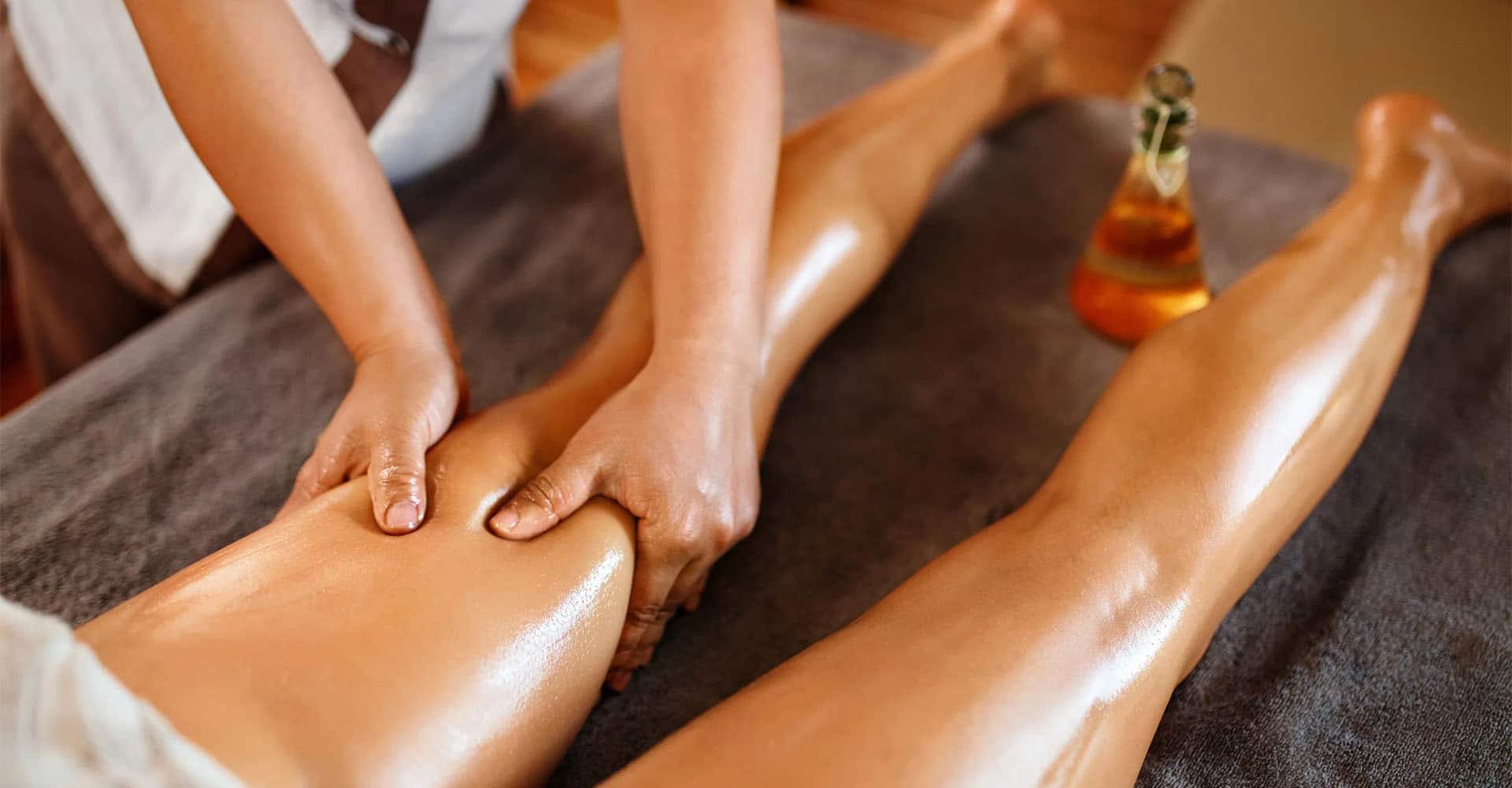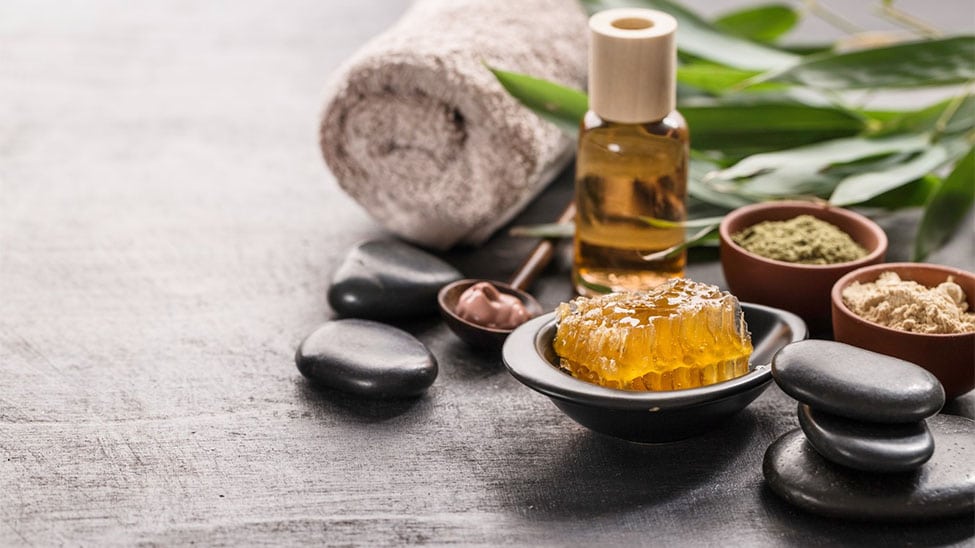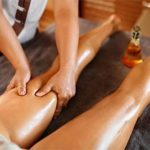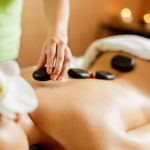
Ayurvedic massage at home – here’s how to do it
Massages are a proven way to relax. Surely you are also a fan of this way to relax and briefly forget about all problems. Besides classical forms of massages, various healing arts offer special versions. Ayurveda is an ancient Indian healing art that teaches a special form of Ayurvedic massage. In this article, we will show and explain to you what the massage art Abhyanga is and what it can do.
What is Ayurveda?
Behind the term Ayurveda is the Indian art of healing, which has been practiced around the world for thousands of years. Until today it is used in India, Nepal and Ski Lanka. But also in western countries there are representatives of this healing art. Many people appreciate this alternative medicine for its natural methods. The central elements of Ayurveda are:
- Ayurvedic massage and purification techniques
- nutritional teachings
- spiritual yoga practice
- Herbal medicine
Ayurveda is a holistic system and belongs to alternative medicine. Ayurveda is holistic because it is a combination of empirical values and philosophy that focuses on aspects important for health and disease. In the West, as well as in India, Ayurveda is used as a form of wellness, among other things, which makes ayurvedic massage at home so appealing to many.
The basic Ayurvedic principles
Doshas and elements
Ayurveda distinguishes between three basic types or basic principles, called doshas. The philosophy of Ayurveda states that the world and all its inhabitants are divided into five elements: Fire, Earth, Water, Air and Ether. These elements form pairs and thus constitute the three doshas.
Balance
Translated, the term means “corrupter” or also “error(potential)”. This term can be traced back to the theory that all doshas must be in harmonic balance. If a dosha is imbalanced, it triggers discomfort and disease.
Distribution
Ayurvedic philosophy states that each person has all the doshas, but in different proportions. Each dosha has a point in the body where it sits. In addition, there are times of day when a dosha is more prominent. This basic distribution of doshas is fixed from birth.
Rare balance
According to Ayurvedic theory, a majority of people have one or two doshas in excess, creating a natural, slight imbalance. Very few people have perfectly balanced doshas.
The three doshas briefly explained
1. Vata (wind, air and ether), the movement principle
The movement principle “Vata” means translated something like “that which moves things”. It has the properties of cold, dry, light and moving. “Vata” has the responsibility of providing our breathing with dynamism.
2. Pitta (fire and water), the fire or metabolic principle
This life energy can be translated as “that which burns things.” “Pitta” has the properties of pungent, hot, light, acidic and fluid. In the body, it mainly takes care of regulating metabolic processes.
3. Kapha (earth and water), the structural principle
The last life energy of Ayurveda can be translated as “that which holds things together.” “Kapha” has the properties of moist cold, heavy, slow, supple and compact. It provides steadfastness in an individual and thus has a great influence on the immune system.
What does the term “Abhyanga” stand for in Ayurveda?
Abhyanga, also known as “The Great (Ayurvedic) Oiling” in the Western world, is a form of Ayurvedic massage. Abhyanga refers to the oiling of the whole body. It is performed with the use of herbal oils, rarely with teas or other substances. Mainly this massage is a part of “Dinacarya Adhyaya” (recommendations for daily life), so called wellness treatments. However, it can also be used in the medical field, for example, to infuse herbal extracts into the body. According to the teachings of Ayurveda, this form of Ayurvedic massage is said to have an extraordinarily positive effect on people.
How exactly does the Ayurveda massage Abhyanga work?
According to the teachings of Ayurveda, the effect of the Abhyanga massage can be divided into three principles. Firstly, the massage provides general physical relaxation, warming and loosening of tissues from skin, muscles and tendons to bones. In addition, being wrapped in heated oil triggers a strong feeling of security and thus has a psychological effect on the person. The third principle of massage states that it is beneficial for the body simply because of the absorption of herbal essences and oils.
How do I perform the Abhyanga massage according to Ayurveda teachings at home?
Step 1: Choosing the right oil
To perform a traditional Abhyanga massage at home, you should use cold-pressed sesame oil, which you can find in any health food store. Sesame oil is especially good because, according to the theory of Ayurveda, it strengthens the Pitta dosha due to its slightly heating effect, so it is ideal for our cold doshas Vatta and Kapha. Also, sesame oil activates the metabolism of skin cells more than other oils. Alternatives to sesame oil, if you have an intolerance, can be found in olive or almond oil, for example.
Step 2: Preparing the oil
The special thing about Ayurvedic massage Abhyanga is that the oil must be matured. That is, the oil is heated to the boiling temperature of water. This changes the molecular structure of the oil and allows it to unfold in the deeper layers of your skin. The maturation of oil works as follows: Put the whole bottle of oil in a pot and add 1-2 drops of water. Then you heat the contents. The moment the drop of water reaches its boiling point, it evaporates with an audible “plop” sound. This is your cue to turn off the stove top. During the process, please always stay by the stove and watch the oil. Once you have heated the oil, it has matured and can be used for many massages.
Step 3: Start the massage
In the beginning, make sure the room temperature is comfortable. If you like, you can light a candle or incense sticks to create the right mood. Now heat about 20 ml of your matured oil in a water bath. It should be pleasantly warm and not hot. To avoid stains on the floor, we recommend that you stand on a towel and have slippers ready. Now start spreading the oil on all parts of your body. Start from the top. Oil your head, ears and face. Then continue with your neck, shoulders and arms. Do this until all parts of the body are covered with oil. Now the oil can begin to work and start to penetrate the skin. This step is just to cover the body with oil. The stroking movements will follow in the next step.
Step 4: Gentle stroking of the body
Now that your body is rubbed with oil, you can start the stroking movements. The rule is that if you stroke with the direction of hair growth, the movement has a relaxing effect and balances the restless vatta. Stroking against the direction of hair growth stimulates metabolism, activates Pitta and decreases the energy of sluggish, excess Kapha. Therefore, to have balance, we recommend alternating the direction of stroking. Start at the head. Massage your scalp with flat hands, going over the ears as well. The skin on the face and neck are usually thin and sensitive, so proceed with light pressure here. When you reach the neck and shoulder area, feel free to apply a little more pressure to loosen muscles. Take your time on areas like the shoulder joints. Here you can make circular movements several times. Make stroking movements along the upper and lower arms. Continue to the abdominal area. Here you alternate between circular movements on the collarbone and chest and stroking movements around the waist and abdomen. Treat your back as you would your abdomen, additionally focus on the tailbone with up and down strokes. You can massage the buttocks again with circular movements. Treat the legs and feet like the shoulder joints and arms. Always make sure to apply pressure and movement in a way that is comfortable for you.
Step 5: Finish the massage
Once you have massaged your whole body with stroking movements, you are approaching the end of the Abhyanga massage. To have a traditional ending of the massage, put few drops of the oil into your nostrils and ears and wait for about 20 minutes. During this time you can sit down, relax further and feel your body. After the massage, take a warm shower and wash off the oil with a mild soap. This way, nothing will attack your skin and it will be able to detoxify and eliminate waste products without any problems. After the shower, rub yourself down vigorously, which promotes blood circulation.
Conclusion of the Ayurvedic massage at home
We hope that with this short guide we could give you a good impression of the Ayurveda massage Abhyanga. Maybe you want to try this massage yourself. Why don’t you take some time to relax in the evening and test your new know-how on Ayurvedic massage at home yourself!










